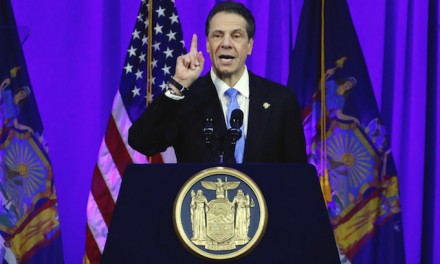House Speaker Mike Johnson (R-La.) has stated that he will not budge from a top-line spending agreement he reached earlier this month with congressional Democrats and the White House. This comes in the face of appeals from conservatives who are more staunchly opposed to the plan and want to find an alternative.
“After weeks of hard-fought negotiations, we achieved a strong top-line agreement that allows our appropriations committee and all those who work on this to complete the appropriations process. It’s an important part of keeping the government running,” Mr. Johnson said on Jan. 12 in a brief statement to the press.
The top line for the funding deal that Mr. Johnson and Senate Majority Leader Chuck Schumer (D-N.Y.) reached is $1.59 trillion. Adding to that, earlier this year, former House Speaker Kevin McCarthy (R-Calif.) and President Joe Biden reached a separate deal, bringing the total spending amount to nearly $1.66 trillion.
As part of the deal to raise the debt ceiling, Mr. McCarthy and President Biden also agreed on the $1.59 trillion amount.
The debt ceiling agreement already set aside $10 billion in cuts to IRS personnel for this year, and the accord between Mr. Schumer and Mr. Johnson adds another $10 billion in cuts for this year. This shifts the planned IRS staff reductions from next year to this year.
A 5.2 percent pay boost for service members and $704 billion for additional discretionary spending make up the remaining $886 billion. The budget pact also includes a reduction in COVID-19 spending amounting to $6.1 billion.
The lawmaker, citing “two weeks of hard negotiations,” said the agreement “brings Congress much closer to regular order, which is our commitment in keeping with my commitment to bring the members into the legislative process.
“I’ve spoken and received feedback this week from many members all across the Republican Conference. That’s a very important part of this. When I became speaker, I committed to decentralizing the speaker’s office and making this a member-driven process,” the House leader said.
“That’s been part of our talk; my agreement remains. We are getting our next steps together. And we are working toward a robust appropriations process. So stay tuned for all that development.”
In order to avoid a government shutdown, Mr. Schumer took the initial procedural step on Jan. 11th, invoking cloture on a “shell bill,” a legislative vehicle for subsequent amendments. A continuing resolution (CR) will replace the wording of a bill that the House has already enacted in order to maintain the existing level of government funding.
The specifics of the final wording of a measure can be ironed out while procedural impediments are being removed with a shell bill. With procedural votes out of the way, lawmakers can pass the final language in a final vote.
This action by Mr. Schumer comes just eight days before the first of the two-legged CRs that were authorized at the end of last year is set to expire on Jan. 19.
Issues of housing, transportation, and food safety are covered. The second CR, which covers the armed forces, scientific inquiry, and national parks, will be up for grabs on Feb. 2.
Hardline Republican conservatives had protested GOP leadership in the wake of the government spending deal struck between Mr. Johnson and Mr. Schumer by blocking a procedural vote on Jan. 11, the very day the House passed the vote.
The Freedom Caucus released a social media statement slamming the arrangement, describing it as a “total failure” and “even worse than [the caucus] thought.” A few Republicans have even gone so far as to demand a government shutdown.
To go to a vote on ultimate approval or rejection of a measure, members of the House must first vote to advance to the consideration of bills.
Jackson Richman contributed to this report.



















Looks like the same old citizen sell out in debt that Pelosi preprogrammed to live to destroy another day. EVERY item should be voted upon and stand on its own merits alone. Continuing resolutions are just Einsteins version of insanity,,,doing the same thing over and over again and expecting to get a different result. That is what elections are supposed to clear up but the faces may change yet the stupidity and corruption lives on. Creating smaller government begins by shutting bad things down, one useless government item or program item vote at a time, but these cush politicians on BOTH sides to the swampy sell out swap meet isle are just too lazy to do the right thing for THE PEOPLE and the hard thing or thinking for themselves. Shutting the government down, then opening it up one item at a time is like Firing everyone in the FBI, then have them get rehired one proven honest crime fighter at a time,,,which would put Joe and the Democrat party out of business in a heartbeat. Evil prevails when good men do nothing. I see nothing new coming out of this fiasco with Slylock Schumer AGAIN getting more than his fair pound of THE PEOPLE’s financial flesh. If the Republicans were as good as Chuck in getting THE PEOPLE to finance his party the next election would be in the bag. The Merchant of Venom lives on, poisoning our financial ability to survive as a nation much longer when the house of cards collapses about our well heeled political crime family’s ears.
Both the Congressmen and Senators need to step up and perform the duties they were elected to do. One which is to create and pass a Balanced Budget, anything less is B.S.. These Continuing Resolutions are just the lazy man’s way of doing their jobs. If YOU are not up for the job, it’s TIME YOU retire.
Seems he is just another ‘go along to get along’
rino…